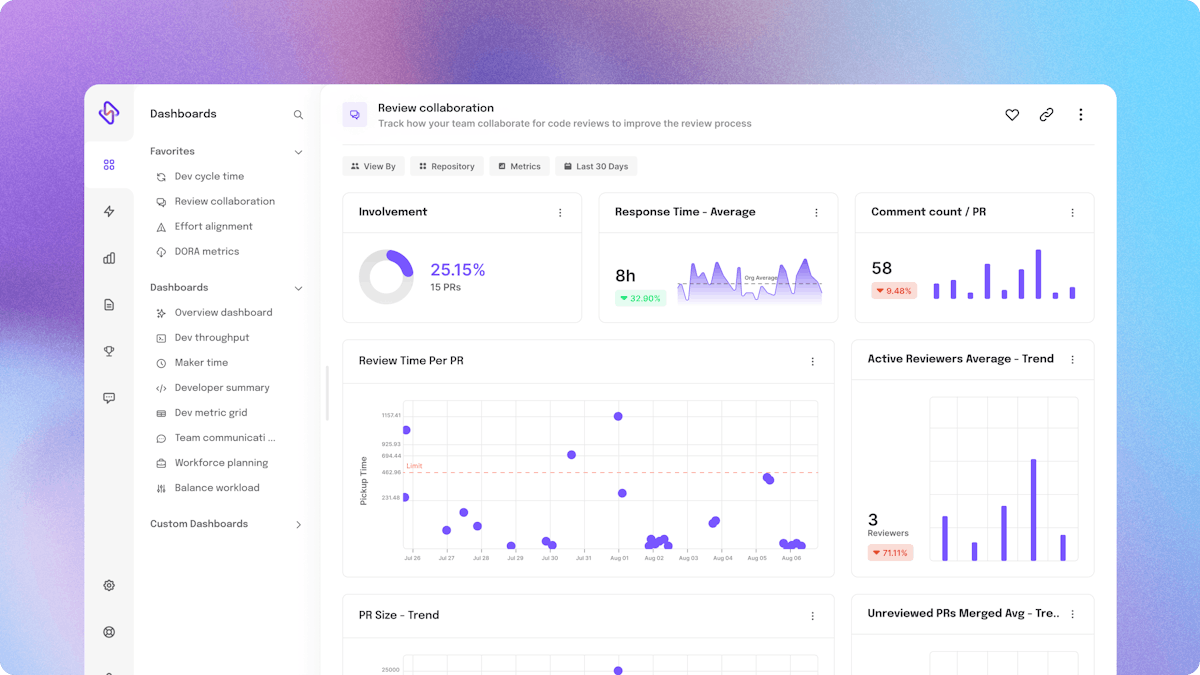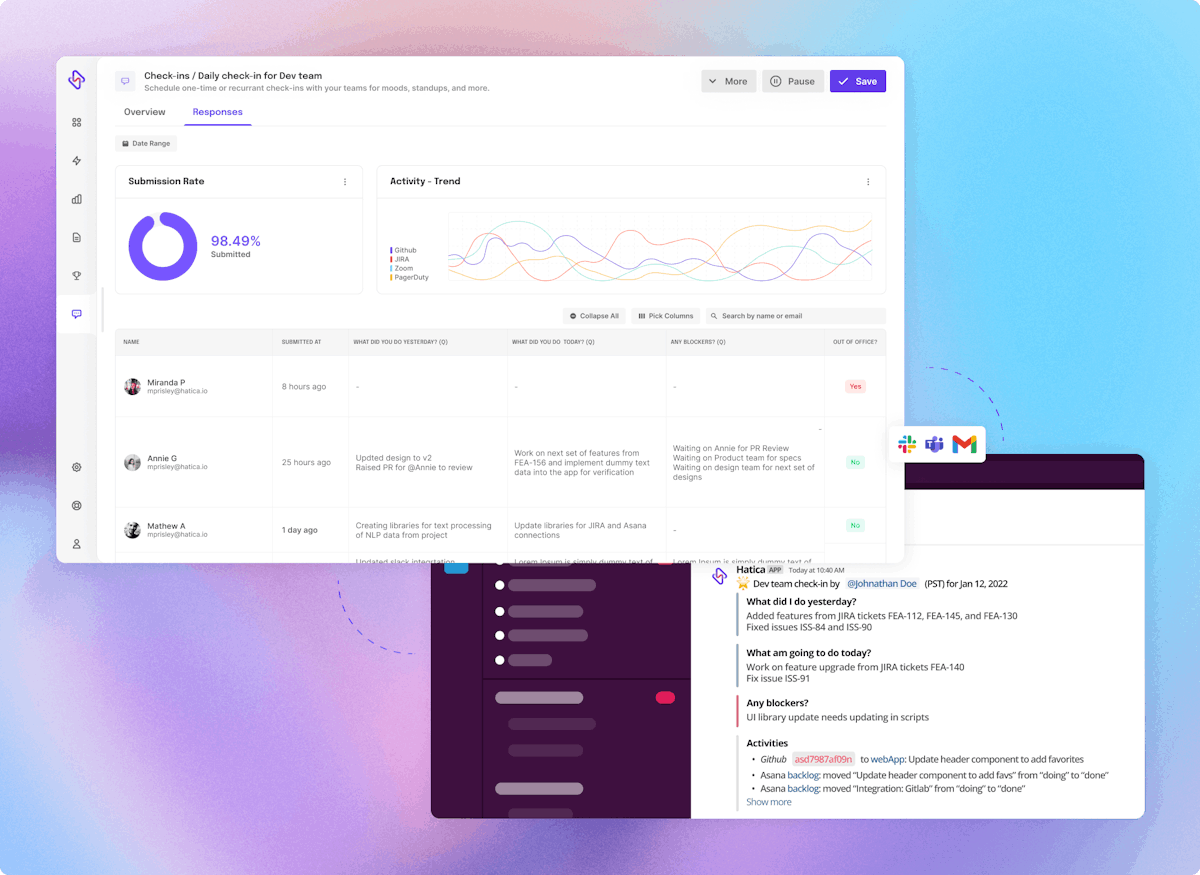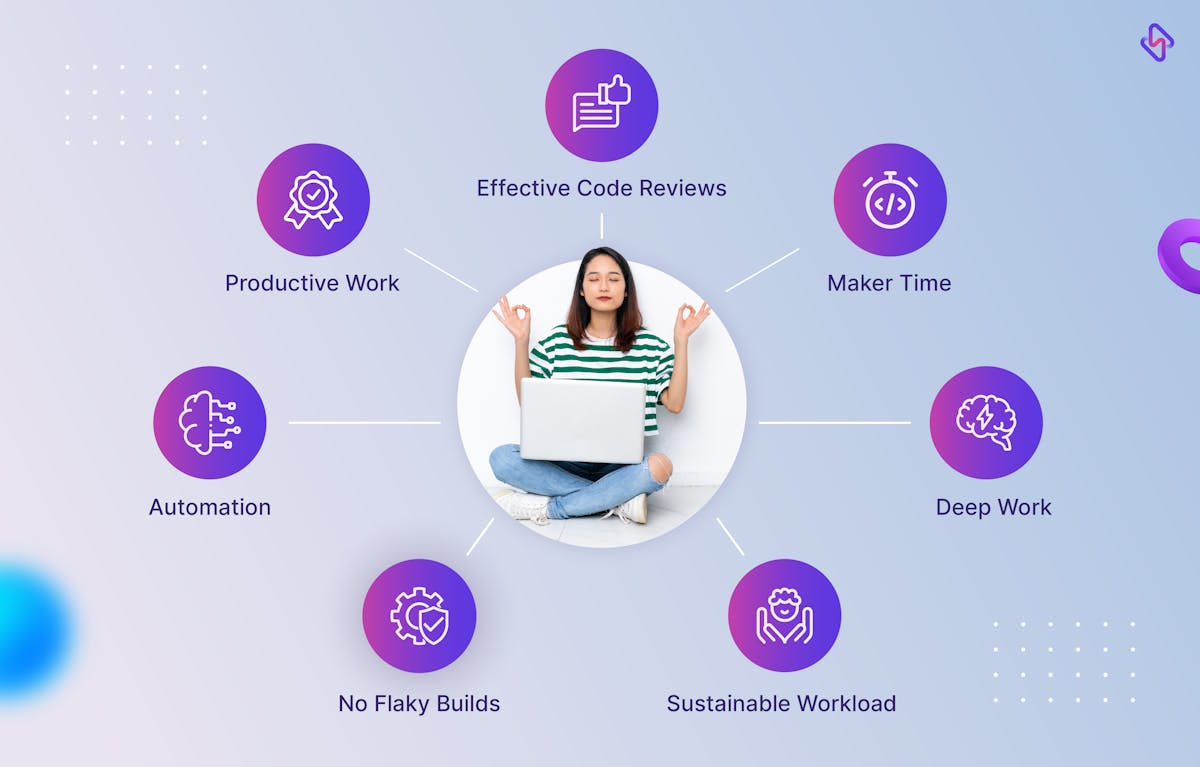All efforts to implement a top-notch DevOps strategy is futile unless your developers are fully enrolled into the overall engineering vision. Preserving Developer Experience (DX) isn’t just about guaranteeing happy devs, but also ensuring they continuously grow, innovate as individual contributors, take the product to new heights, and unlock super productivity.
DX becomes vital, especially when teams are constantly switching between dev and ops side of development, and facing multiple time-retching handoffs every day. The constant tussle between the two teams gets evident especially in team meetings, and overall engineering discussions.
The future of DevOps closely follows the DX trajectory in a team. A positive DX can help teams realize fewer flaky builds, a pro-developer environment with minimal pre-commits, and seamless hand-offs between dev, ops, and SREs. DevOps is more dynamic than any of its tech counterparts, making teams continuously expand, sometimes at uncomfortable paces. All these changes require teams to enroll and empower developers completely.
Transforming your DevOps techstack, infrastructure, or production environment without accounting for your developer’s comfort and satisfaction, will prove to be an unfateful disaster. Without bringing all engineering teams at one place, engineering leaders cannot move to microservices from monolithism.
Developer experience creates openness, transparency, and mutual recognition of a dev’s work- all pre-requisites of a developer-centric work culture. Only when devs are fully engrossed and in control of their work, engineering leaders can break inter-team silos, and figure out better workflows.
That’s where continuously sustaining DX becomes vital once engineers become part of the ‘larger’ DevOps picture, when they have a positive work experience, they can help companies continuously evolve, grow, and innovate.
What’s Next For Your DevOps Team?
The software landscape is changing. It is not just about creating a better product anymore; rather building a better development process, and enabling your developer talent to generate the highest level of customer satisfaction. Implementing DevOps the right way helps organizations to surpass their competition with faster updates, increased reliability, improved scalability, cost savings, and improved overall experience.
At its heart, DevOps is all about continuous improvement- in terms of software delivery, velocity, and the overall team happiness, and well-being. Implementing these best practices will give your organization a much-needed edge in today's evolving digital landscape, and should be a top priority for engineering managers.
Teams need to understand that DevOps cannot be implemented overnight, but with the right tools, the whole process looks more hassle-free, and doable. Schedule a demo today to learn how Hatica’s engineering analytics platform can help you build a super productive DevOps environment, through continuous improvement, continuous building, and most importantly, continuous collaboration.






